Uncategorized
Crypto Daybook Americas: Bitcoin Bargain Hunting Faces Crucial Jobs Report Test
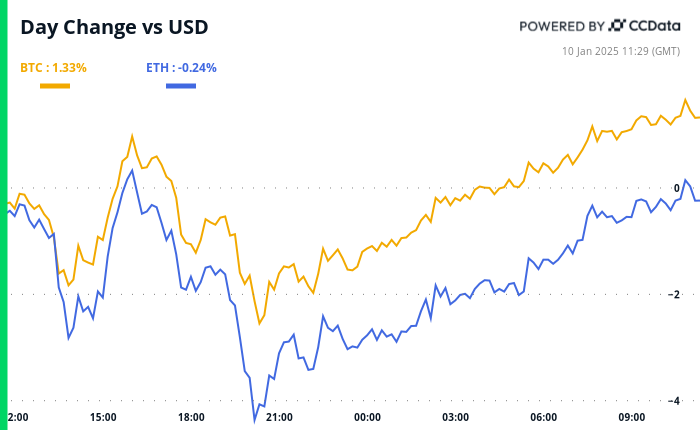
By Omkar Godbole (All times ET unless indicated otherwise)
The crypto market has regained some stability, with BTC rising back to nearly $95K as order books signaled the presence of bargain hunters. Late Wednesday, prices tested the long-standing support zone of $90K-$93K, which has successfully halted downward movements at least six times since the second half of November.
This latest bounce will be tested by Friday’s U.S. nonfarm payrolls report, which is anticipated to show an addition of 164,000 jobs in December, following November’s gain of 227,000, per FXStreet. The unemployment rate is expected to match November’s pace of 4.2%, while average hourly earnings are projected to cool slightly to 0.3% month-on-month, down from 0.4%.
A stronger-than-expected jobs report could add to the existing hawkish Fed fears, further increasing inflation-adjusted bond yields. These yields have been rising due to inflation worries, complicating matters for risk assets. The inflation scare and rates volatility likely catalyzed BTC’s rapid descent from $102K to $93K in the past four days.
To illustrate just how bearish sentiment was early today, the funding rate in perpetual markets turned negative, representing a dominance of shorts, that too at a time when BTC is just 15% away from its record high.
The prevalence of the Fed-led pessimism means any sign of weakness in the payrolls figure will likely trigger sharp market reactions, reviving the case for Fed rate cuts and shifting sentiment markedly in favor of risk assets. If the data misses estimates by a wide margin, BTC could easily make another attempt at $100K, provided the U.S. government, which holds approximately $18.50 billion worth of BTC, refrains from flooding the market with offers to sell. Stay alert.
What to Watch
Crypto
No major crypto events scheduled today.
Jan. 12, 10:30 p.m.: Binance will halt Fantom token (FTM) deposits and withdrawals and delist all FTM trading pairs. FTM tokens will be swapped for S tokens at a 1:1 ratio.
Jan. 13: Solayer (LAYER) «Season 1» airdrop snapshot for staking participants, liquidity providers, and partner ecosystem users. Eligibility details and terms will be available on the Solayer dashboard.
Jan. 15: Derive (DRV) to create and distribute new tokens in token generation event.
Jan. 15: Mintlayer version 1.0.0 release. The mainnet upgrade introduces atomic swaps, enabling native BTC cross-chain swaps.
Jan. 16, 3:00 a.m.: Trading for the Sonic token (S) is set to start on Binance, featuring pairs like S/USDT, S/BTC, and S/BNB.
Macro
Jan. 10, 8:30 a.m.: The U.S. Bureau of Labor Statistics (BLS) releases December 2024’s Employment Situation Summary report.
Nonfarm payrolls Est. 160K vs. Prev. 227K.
Unemployment rate Est. 4.2% vs Prev. 4.2%.
Jan. 10, 10:00 a.m.: The University of Michigan releases January’s Michigan Consumer Sentiment (Preliminary). Est. 73.8 vs. Prev. 74.0.
Jan. 14, 8:30 a.m.: The U.S. Bureau of Labor Statistics (BLS) releases December 2024’s PPI data.
PPI MoM Prev. 0.4%.
Core PPI MoM Prev. 0.2%.
Core PPI YoY Prev. 3.4%.
PPI YoY Prev. 3%.
Jan. 14, 8:55 a.m.: U.S. Redbook YoY for the week ending on Jan. 11. Prev. 6.8%.
Jan. 15, 8:30 a.m.: The U.S. Bureau of Labor Statistics (BLS) releases December 2024’s Consumer Price Index Summary.
Core Inflation Rate MoM Prev. 0.3%.
Core Inflation Rate YoY Prev. 3.3%.
Inflation Rate MoM Prev. 0.3%.
Inflation Rate YoY Prev. 2.7%.
Jan. 16, 2:00 a.m.: The U.K.’s Office for National Statistics November 2024’s GDP estimate.
GDP MoM Prev. -0.1%
GDP YoY Prev. 1.3%.
Jan. 16, 8:30 a.m.: The U.S. Department of Labor releases the Unemployment Insurance Weekly Claims Report for the week ending on Jan. 11. Initial Jobless Claims Prev. 201K.
Token Events
Governance votes & calls
No major events scheduled today.
Jan. 14: Mantra community call with its co-founder
Unlocks
No major unlocks scheduled today.
Jan. 11: Aptos to unlock 1.13% of its APT circulating supply, worth $98.85 million.
Jan. 12: Axie Infinity to unlock 1.45% of its circulating supply, worth $14.08 million.
Jan. 14: Arbitrum to unlock 0.93% of its circulating supply, worth $70.65 million.
Token Launches
No major token launches scheduled today.
Jan. 15: Derive (DRV) will launch, with 5% of supply going to sENA stakers.
Jan. 17: Solv Protocol (SOLV) to be listed on Binance.
Conferences:
Day 5 of 14: Starknet, an Ethereum layer 2, is holding its Winter Hackathon (online).
Jan. 13-24: Swiss WEB3FEST Winter Edition 2025 (Zug, Zurich, St. Moritz, Davos)
Jan. 17: Unchained: Blockchain Business Forum 2025 (Los Angeles)
Jan. 18: BitcoinDay (Naples, Florida)
Jan. 20-24: World Economic Forum Annual Meeting (Davos-Klosters, Switzerland)
Jan. 21: Frankfurt Tokenization Conference 2025
Jan. 25-26: Catstanbul 2025 (Istanbul). The first community conference for Jupiter, a decentralized exchange (DEX) aggregator built on Solana.
Jan 30-31: Plan B Forum (San Salvador, El Salvador)
Feb. 3: Digital Assets Forum (London)
Feb. 18-20: Consensus Hong Kong
Token Talk
By Shaurya Malwa
Usual protocol’s USD0++, which is a special version of USD0 where users can earn interest by «staking» it, has dropped from being worth $1 to about 93 cents after the team made changes to how users can get their money back early.
Traders showed a preference for AI Agent tokens aiXBT, Cookie DAO’s COOKIE, and ChainGPT as they rose as much as 50% on Binance spot listings. Viral token ai16z was up 11% and the agents category up was 8% on average, leading growth among all other crypto sectors.
A deposit vault on the upcoming network Berachain hit $1.1 billion in holdings, led by StakeStone at $370 million.
The Arbitrum DAO is voting on an improvement proposal (AIP) to implement the Bounded Liquidity Delay (BoLD) on Arbitrum One and Nova. If approved, it will replace the current validator system with a permissionless one, allowing broader participation in securing the network.
Ronin and Virtuals have collaborated to introduce an AI agent named
$JAIHOZ, fashioned after Ronin’s cofounder @Jihoz_Axie. The token was launched with a supply split between Base and Ronin blockchains, with some tokens airdropped to community members.
Derivatives Positioning
HYPE, LTC, SHIB, SUI and TON have experienced an uptick in perpetual futures open interest in the past 24 hours, with XLM leading the drop in open positions in other major tokens.
The front-end BTC and ETH risk reversals show put bias while longer duration calls continue to draw premium relative to puts.
Block trades in BTC options painted a mixed picture. In ETH’s case, the largest block trade involved a short position in the $3,700 call expiring on Feb. 28 to fund a long position in the $3,200 put with the same expiry.
Market Movements:
BTC is up 3.06% from 4 p.m. ET Thursday to $94,967.46 (24hrs: +1.52%)
ETH is up 3.46% at $3,306.56 (24hrs: +0.11%)
CoinDesk 20 is unchanged at 3,375.16(24hrs: -0.74%)
Ether staking yield is down 1 bp to 3.14%
BTC funding rate is at 0.0013% (1.38% annualized) on Binance
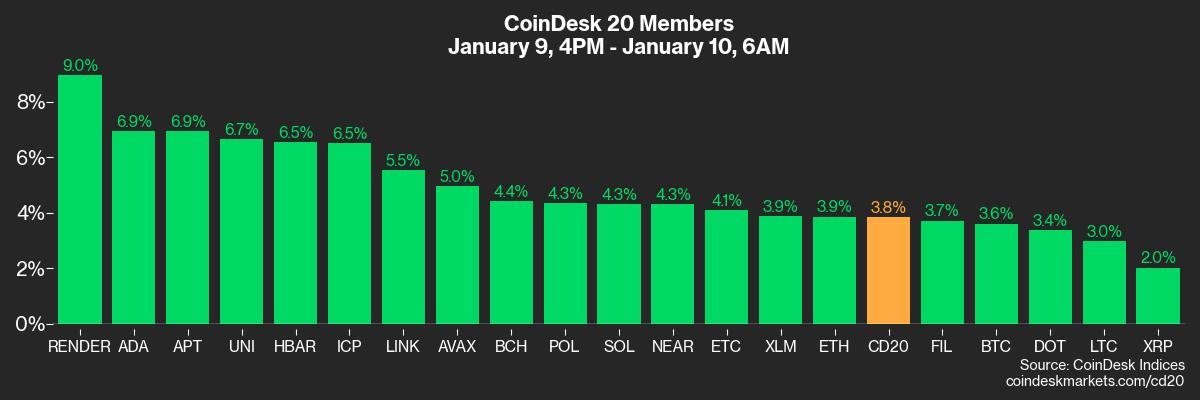
DXY is unchanged at 109.18
Gold is up 0.91% at $2,708.1/oz
Silver is up 1.3% to $31.19/oz
Nikkei 225 closed -1.05% at 39,190.4
Hang Seng closed -0.92% at 19,064.29
FTSE is down 0.18% at 8,304.75
Euro Stoxx 50 is up 0.19% at 5,027.38
DJIA closed on Thursday +0.25% at 42,635.20
S&P 500 closed +0.16% at 5,918.25
Nasdaq closed +0.83% at 19,480.91
S&P/TSX Composite Index closed unchanged at 19,478.88
S&P 40 Latin America closed +0.27% at 2,210.99
U.S. 10-year Treasury is up 2 bps at 4.71%
E-mini S&P 500 futures are unchanged at 5,948.00
E-mini Nasdaq-100 futures are unchanged at 21,313.75
E-mini Dow Jones Industrial Average Index futures are unchanged at 42,846.0
Bitcoin Stats:
BTC Dominance: 58.02
Ethereum to bitcoin ratio: 0.034
Hashrate (seven-day moving average): 772 EH/s
Hashprice (spot): $54.3
Total Fees: 6.6 BTC/ $653,353
CME Futures Open Interest: 497,207 BTC
BTC priced in gold: 35.2 oz
BTC vs gold market cap: 10.09%
Technical Analysis
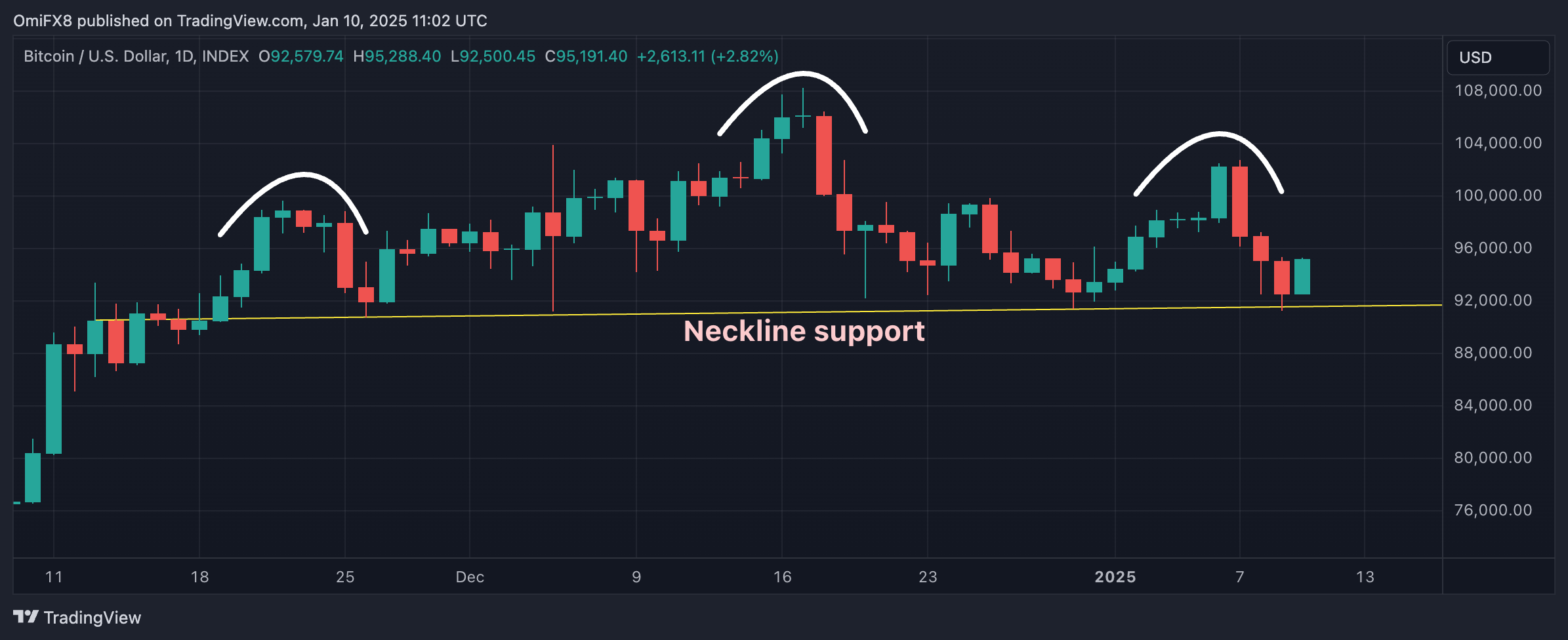
BTC has bounced to $95K, having held the head-and-shoulders (H&S) neckline support Thursday.
Prices need to move above $102,750, the lower high or the right shoulder created Monday to signal a renewed bullish outlook.
A UTC close under the horizontal support line would confirm the H&S top and shift focus to deeper support at $75,000.
Crypto Equities
MicroStrategy (MSTR): closed on Thursday at $331.7 (-2.85%), up 2.03% at $338.44 in pre-market.
Coinbase Global (COIN): closed at $260.01(-1.63%), up 0.73% at $261.91 in pre-market.
Galaxy Digital Holdings (GLXY): closed at C$26.85 (-2.79%)
MARA Holdings (MARA): closed at $18.34 (-3.83%), up 0.93% at $18.51 in pre-market.
Riot Platforms (RIOT): closed at $12.02 (-3.14%), up 0.83% at $12.12 in pre-market.
Core Scientific (CORZ): closed at $14.05 (-0.5%), up 1% at $14.19 in pre-market.
CleanSpark (CLSK): closed at $10.09 (-5.79%), up 1.09% at $10.20 in pre-market.
CoinShares Valkyrie Bitcoin Miners ETF (WGMI): closed at $23.15(-4.93%).
Semler Scientific (SMLR): closed at $50.19 (-9.14%), unchanged in pre-market.
ETF Flows
U.S. exchanges were closed on Jan.9 in a national day of mourning for former President Jimmy Carter, who passed away on December 29, 2024.
The ETF data below is from Jan.8 and remains unchanged.
Spot BTC ETFs:
Daily net flow: $676 million
Cumulative net flows: $31.70 billion
Total BTC holdings ~ 1.080 million.
Spot ETH ETFs
Daily net flow: $132.6 million
Cumulative net flows: $733.6 million
Total ETH holdings ~ 3.077 million.
Source: Farside Investors
Overnight Flows
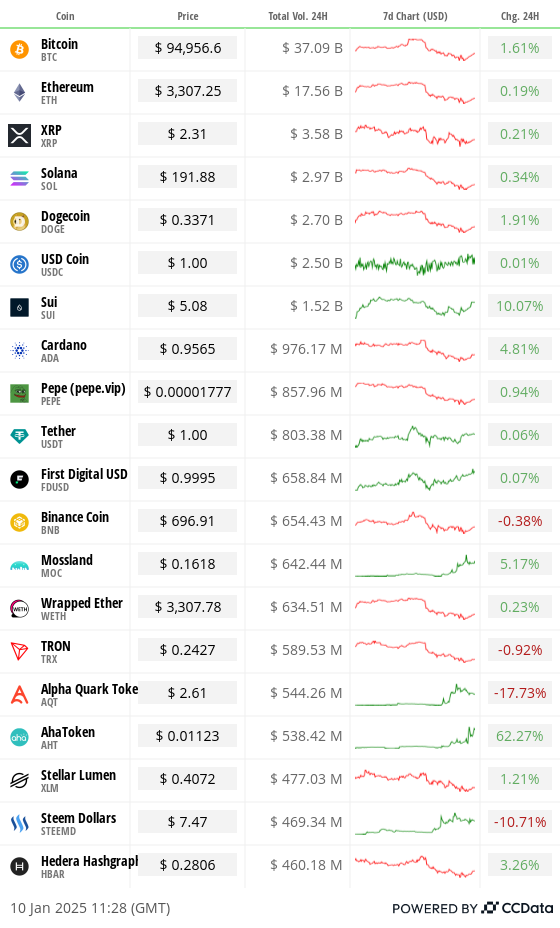
Chart of the Day
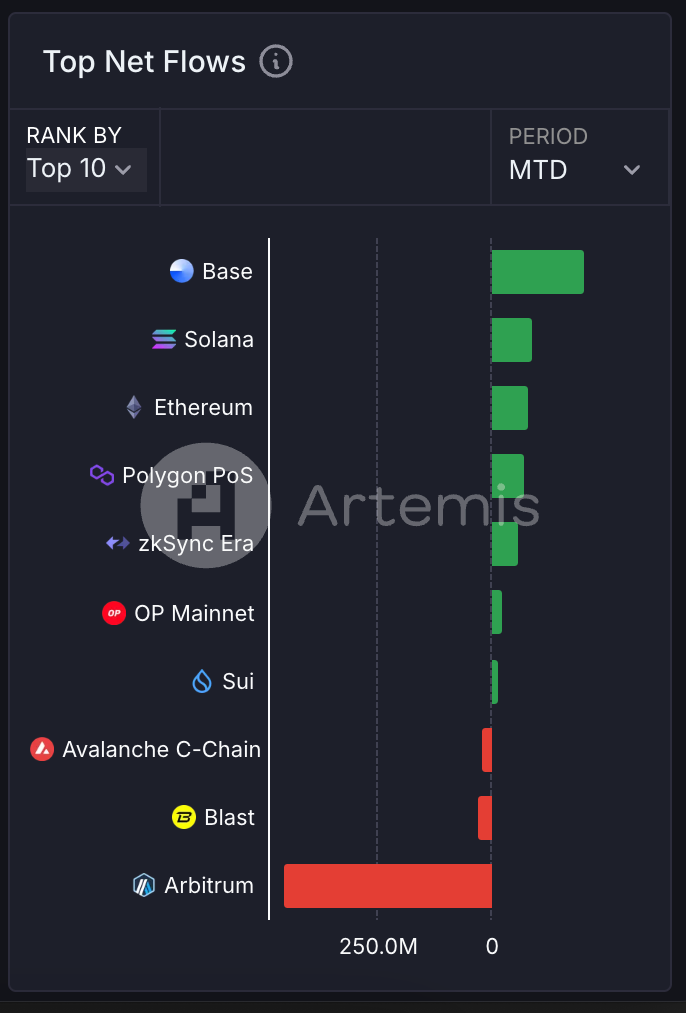
The chart shows the top 10 chains of the month in terms of the net volume of assets received using a crypto bridge.
Coinbase’s layer 2 scaling solution leads the pack with net inflows of $208 million followed by Solana’s distant second $92 million.
While You Were Sleeping
The Bitcoin Iceberg: Buyers Await Beneath the Bearish Surface (CoinDesk): Bitcoin faces selling pressure from inflation concerns, while strong bids at lower prices suggest potential stabilization. Traders and investors await the U.S. nonfarm payrolls report for Federal Reserve policy cues.
Polymarket’s Customer Data Sought by CFTC Subpoena of Coinbase, Source Says (CoinDesk): The U.S. CFTC has allegedly subpoenaed Coinbase for data on Polymarket customers amid legal battles with blockchain-powered prediction markets. Coinbase has apparently warned users it may disclose the requested information.
Standard Chartered Debuts Crypto Services in Europe With New License (Cointelegraph): On Thursday, Standard Chartered launched crypto custody services in Europe via Luxembourg, using it as an E.U. regulatory entry point under the Markets in Crypto-Assets (MiCA) framework.
China Swap Curve Inverts as Traders Dial Back Rate-Cut Bets (Bloomberg): China’s money markets anticipate delayed monetary easing to protect the yuan, deepening a rare swap curve inversion as policymakers struggle to balance currency stability and economic support.
Japan November Household Spending Falls As Price Pressures Persist (Reuters): Japan’s November spending decline eased, but rising prices and stagnant wages limit consumption recovery, leaving analysts skeptical about real wage growth or a Bank of Japan rate hike this month.
Whitehall Braced for Spending Cuts After UK Hit by Bond Market Turmoil (Financial Times): The U.K. faces rising borrowing costs as 10-year gilt yields hit 4.93%, the highest since 2008, and the pound drops to a year-low, prompting warnings of tighter government budgets.
In the Ether



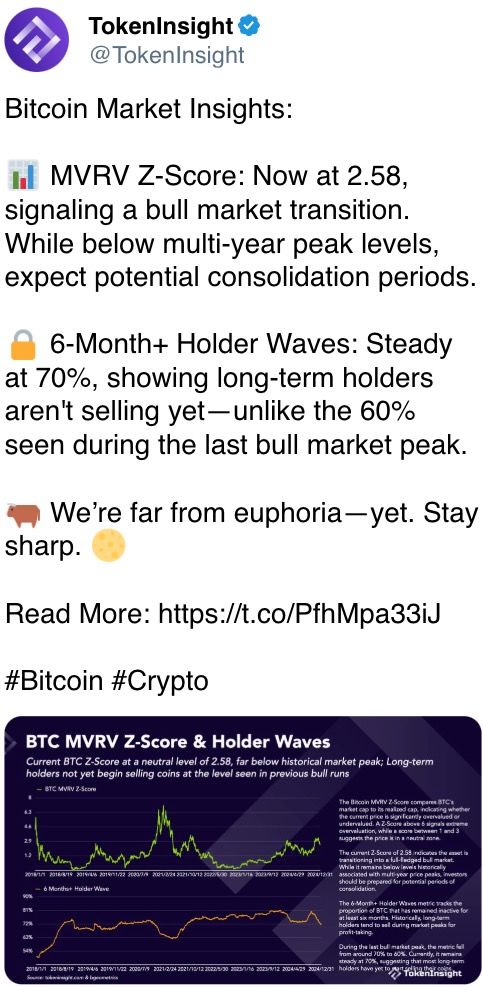
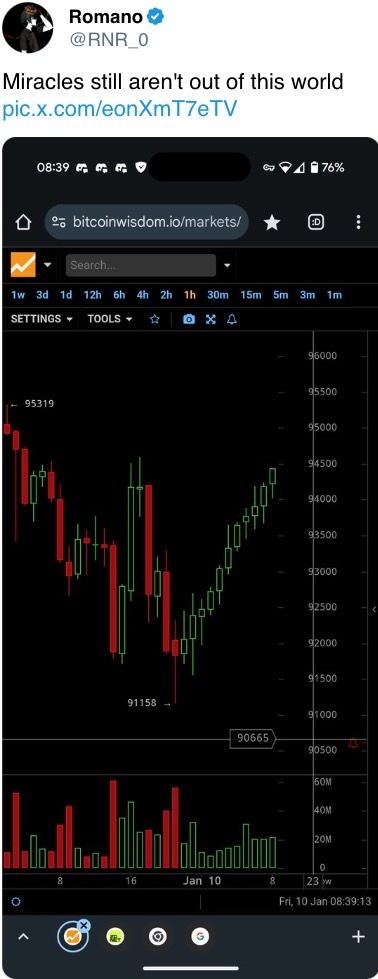
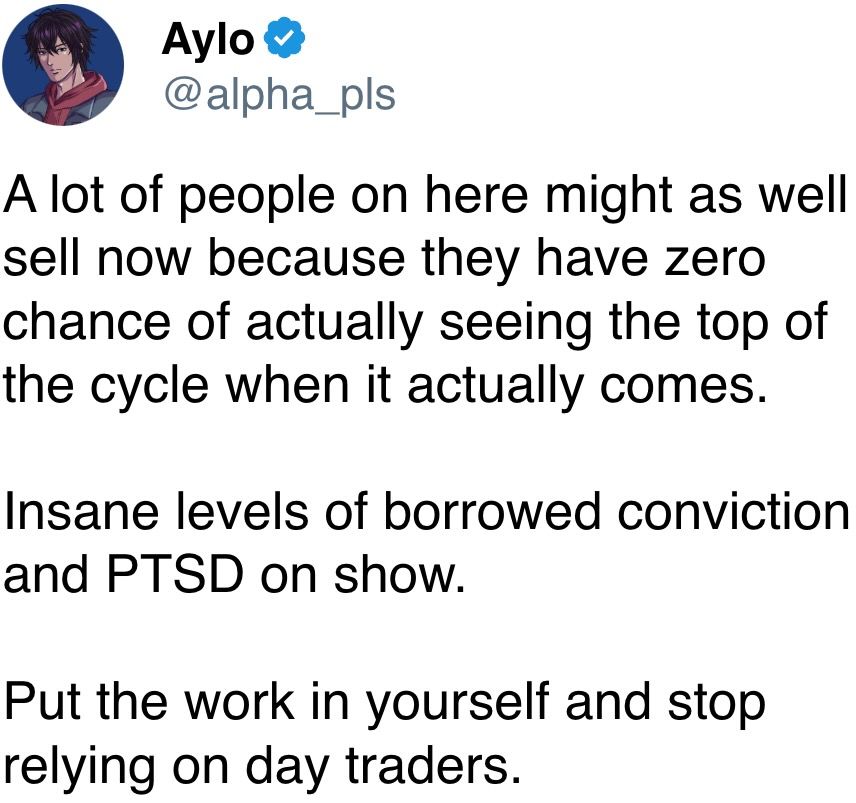
Uncategorized
AI, Mining News: GPU Gold Rush: Why Bitcoin Miners Are Powering AI’s Expansion

When Core Scientific signed a $3.5 billion deal to host artificial intelligence (AI) data centers earlier this year, it wasn’t chasing the next crypto token — it was chasing a steadier paycheck. Once known for its vast fleets of bitcoin mining rigs, the company is now part of a growing trend: converting energy-intensive mining operations into high-performance AI facilities.
Bitcoin miners like Core, Hut 8 (HUT) and TeraWulf (WULF) are swapping ASIC machines — the dedicated bitcoin mining computer — for GPU clusters, driven by the lure of AI’s explosive growth and the harsh economics of crypto mining.
Power play
It’s no secret that bitcoin mining requires an extensive amount of energy, which is the biggest cost of minting a new digital asset.
Back in the 2021 bull run, when the Bitcoin network’s hashrate and difficulty were low, miners were making out like bandits with margins as much as 90%. Then came the brutal crypto winter and the halving event, which slashed the mining reward in half. In 2025, with surging hashrate and energy prices, miners are now struggling to survive with razor-thin margins.
However, the need for power—the biggest input cost—became a blessing in disguise for these miners, who needed a different strategy to diversify their revenue sources.
Due to rising competition for mining, the miners continued to procure more machines to stay afloat, and with it came the need for more megawatts of electricity at a cheaper price. Miners invested heavily in securing these low-cost energy sources, such as hydroelectric or stranded natural gas sites, and developed expertise in managing high-density cooling and electrical systems—skills honed during the crypto boom of the early 2020s.
This is what captured the attention of AI and cloud computing firms. While bitcoin relies on specialized ASICs, AI thrives on versatile GPUs like Nvidia’s H100 series, which require similar high-power environments but for parallel processing tasks in machine learning. Instead of building out data centers from scratch, taking over mining infrastructure, which already has power ready, became a faster way to grow an increasing appetite for AI-related infrastructure.
Essentially, these miners aren’t just pivoting—they’re retrofitting.
The cooling systems, low-cost energy contracts, and power-dense infrastructure they built during the crypto boom now serve a new purpose: feeding the AI models of companies like OpenAI and Google.
Firms like Crusoe Energy sold off mining assets to focus solely on AI, deploying GPU clusters in remote, energy-rich locations that mirror the decentralized ethos of crypto but now fuel centralized AI hyperscalers.
Terraforming AI
Bitcoin mining has effectively «terraformed» the terrain for AI compute by building out scalable, power-efficient infrastructure that AI desperately needs.
As Nicholas Gregory, Board Director at Fragrant Prosperity, noted, «It can be argued bitcoin paved the way for digital dollar payments as can be seen with USDT/Tether. It also looks like bitcoin terraformed data centres for AI/GPU compute.»
This pre-existing «terraforming» allows miners to retrofit facilities quickly, often in under a year, compared to the multi-year timelines for traditional data center builds. Firms like Crusoe Energy sold off mining assets to focus solely on AI, deploying GPU clusters in remote, energy-rich locations that mirror the decentralized ethos of crypto but now fuel centralized AI hyperscalers.
Higher returns
In practice, it means miners can flip a facility in less than a year—far faster than the multi-year timeline of a new data center.
But AI isn’t a cheap upgrade.
Bitcoin mining setups are relatively modest, with costs ranging from $300,000 to $800,000 per megawatt (MW) excluding ASICs, allowing for quick scalability in response to market cycles. Meanwhile, AI infrastructure demands significantly higher capex due to the need for advanced liquid cooling, redundant power systems, and the GPUs themselves, which can cost tens of thousands per unit and face global supply shortages. Despite the steeper upfront costs, AI offers miners up to 25 times more revenue per kilowatt-hour than bitcoin mining, making the pivot economically compelling amid rising energy prices and declining crypto profitability.
A niche industry worth billions
As AI continues to surge and crypto profits tighten, bitcoin mining could become a niche game—one reserved for energy-rich regions or highly efficient players, especially as the next in 2028 could render many operations unprofitable without breakthroughs in efficiency or energy costs.
While projections show the global crypto mining market growing to $3.3 billion by 2030, at a modest 6.9% CAGR, the billions would be overshadowed by AI’s exponential expansion. According to KBV Research, the global AI in mining market is projected to reach $435.94 billion by 2032, expanding at a compound annual growth rate (CAGR) of 40.6%.
With investors already seeing dollar signs in this shift, the broader trend suggests the future is either a hybrid or a full conversion to AI, where stable contracts with hyperscalers promise longevity over crypto’s boom-bust cycles.
This evolution not only repurposes idle assets but also underscores how yesterday’s crypto frontiers are forging tomorrow’s AI empires.
Uncategorized
Bitcoin Climbs as Economy Cracks — Is it Bullish or Bearish?
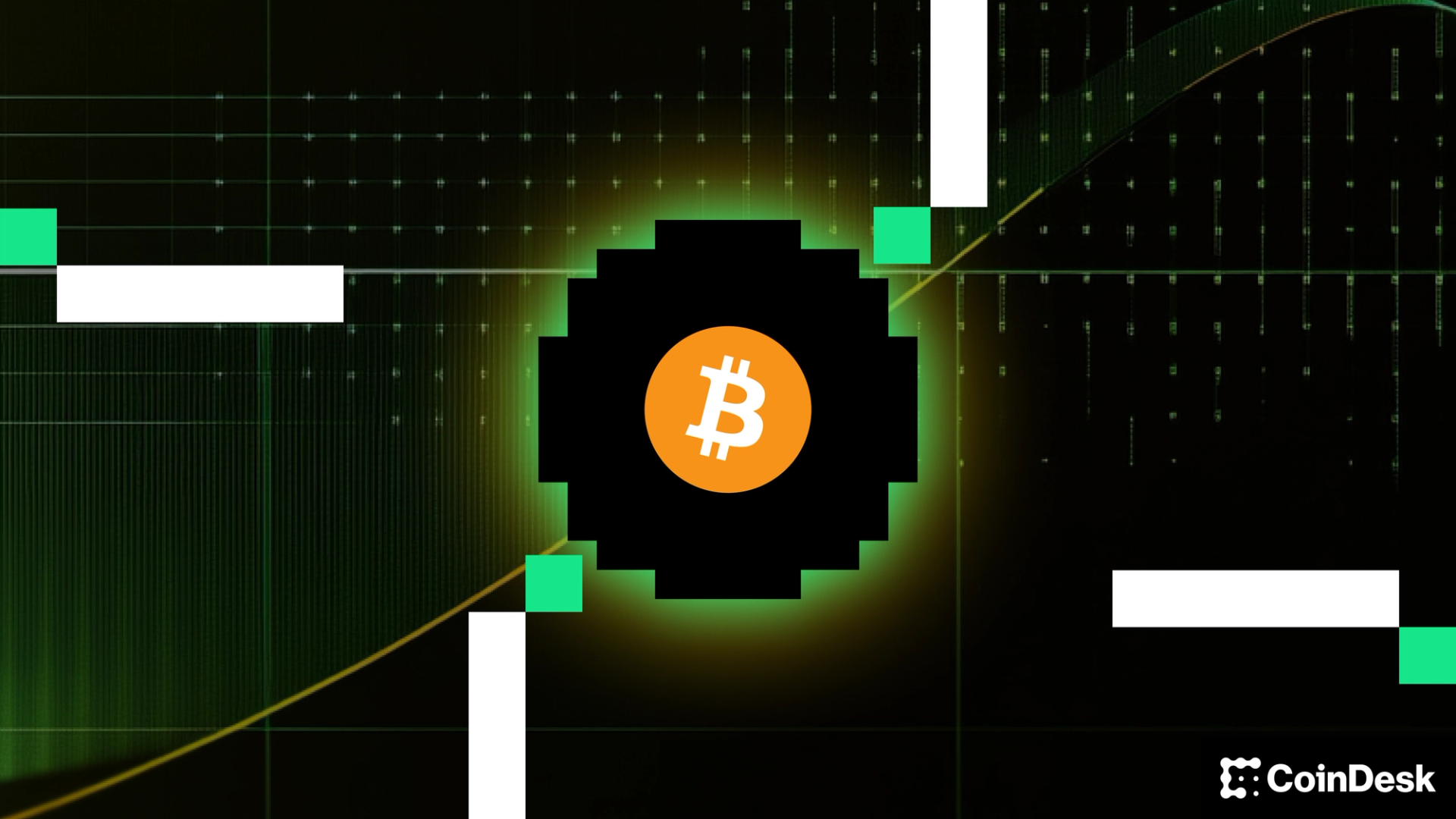
Bitcoin (BTC) is about 4% higher than it was a week ago—good news for the digital asset but bad news for the economy.
The recent negative tone of the economic data points from last week raised expectations that the Federal Reserve will cut interest rates on Wednesday, making riskier assets such as stocks and bitcoin more attractive.
Let’s recap the data that backs up that thesis.
The most important one, the U.S. CPI figures, came out on Thursday. The headline rate was slightly higher than expected, a sign inflation might be stickier than anticipated.
Before that, we had Tuesday’s revisions to job data. The world’s largest economy created almost 1 million fewer jobs than reported in the year ended March, the largest downward revision in the country’s history.
The figures followed the much-watched monthly jobs report, which was released the previous Friday. The U.S. added just 22,000 jobs in August, with unemployment rising to 4.3%, the Bureau of Labor Statistics said. Initial jobless claims rose 27,000 to 263,000 — the highest since October 2021.
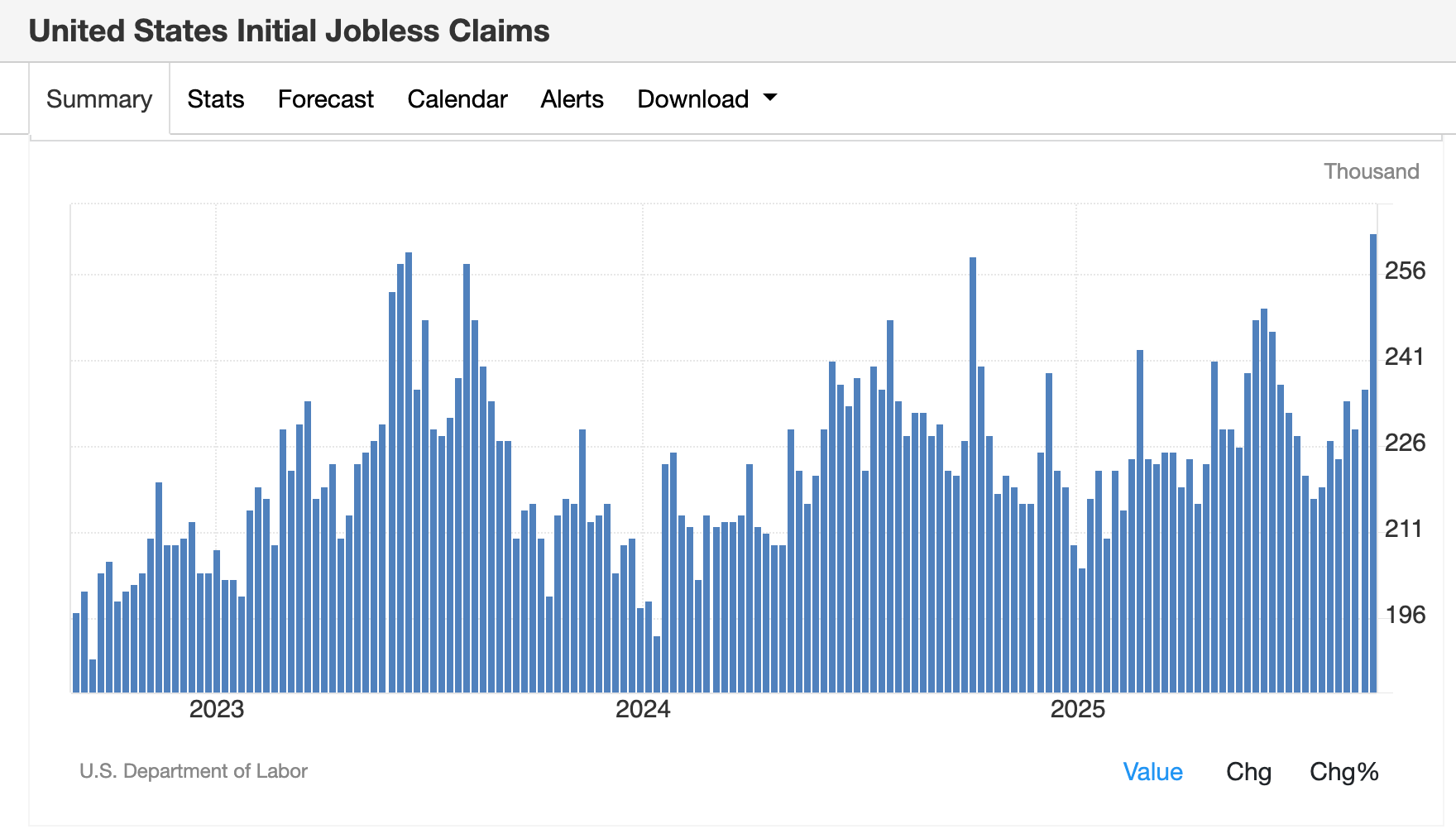
Higher inflation and fewer jobs are not great for the U.S. economy, so it’s no surprise that the word «stagflation» is starting to creep back into macroeconomic commentary.
Against this backdrop, bitcoin—considered a risk asset by Wall Street—continued grinding higher, topping $116,000 on Friday and almost closing the CME futures gap at 117,300 from August.
Not a surprise, as traders are also bidding up the biggest risk assets: equities. Just take a look at the S&P 500 index, which closed at a record for the second day on the hope of a rate cut.
So how should traders think about BTC’s price chart?
To this chart enthusiast, price action remains constructive, with higher lows forming from the September bottom of $107,500. The 200-day moving average has climbed to $102,083, while the Short-Term Holder Realized Price — often used as support in bull markets — rose to a record $109,668.
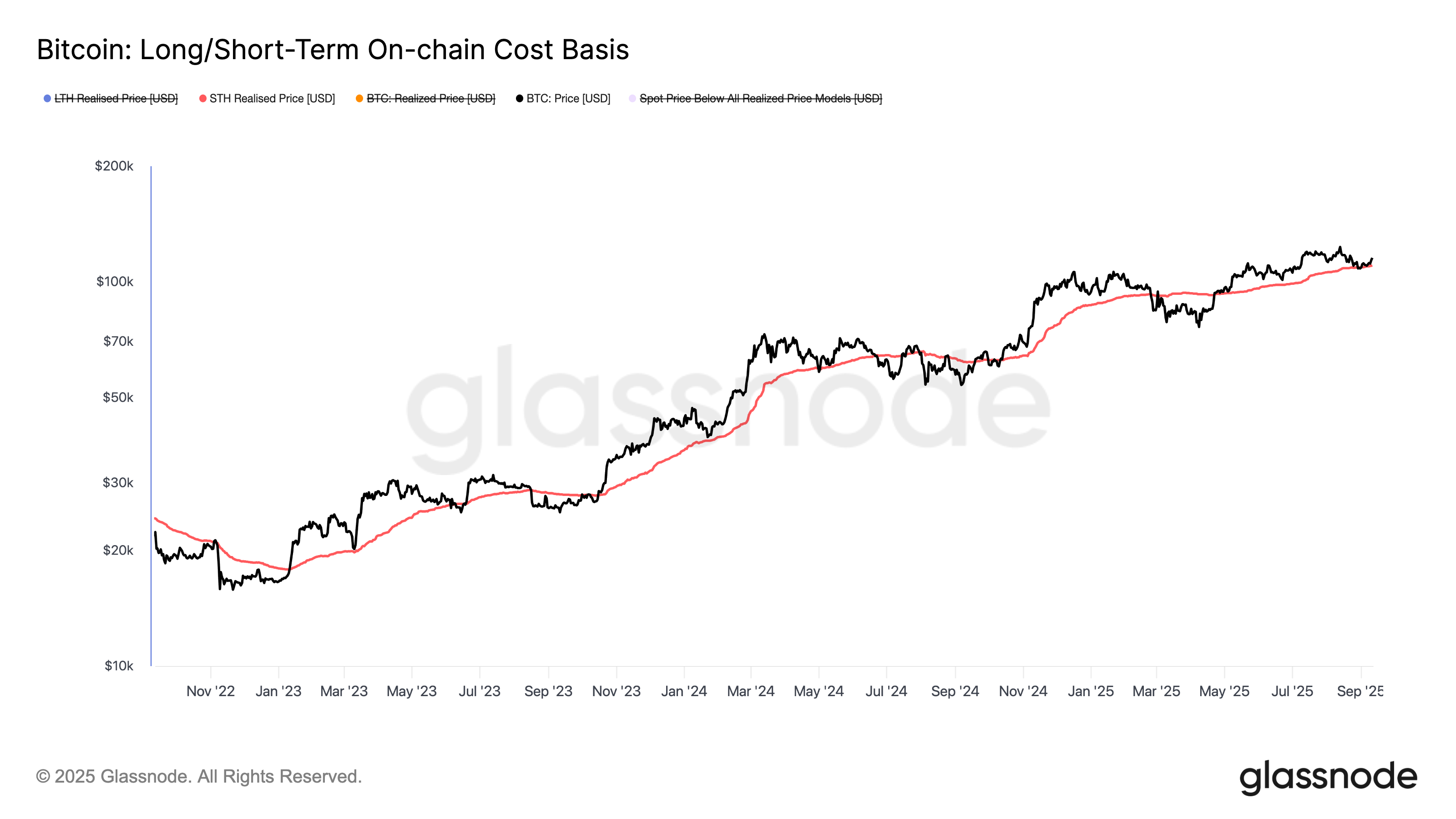
Bitcoin-linked stocks: A mixed bag
However, bitcoin’s weekly positive price action didn’t help Strategy (MSTR), the largest of the bitcoin treasury companies, whose shares were about flat for the week. Its rivals performed better: MARA Holdings (MARA) 7% and XXI (CEP) 4%.
Strategy (MSTR) has underperformed bitcoin year-to-date and continues to hover below its 200-day moving average, currently $355. At Thursday’s close of $326, it’s testing a key long-term support level seen back in September 2024 and April 2025.
The company’s mNAV premium has compressed to below 1.5x when accounting for outstanding convertible debt and preferred stock, or roughly 1.3x based solely on equity value.
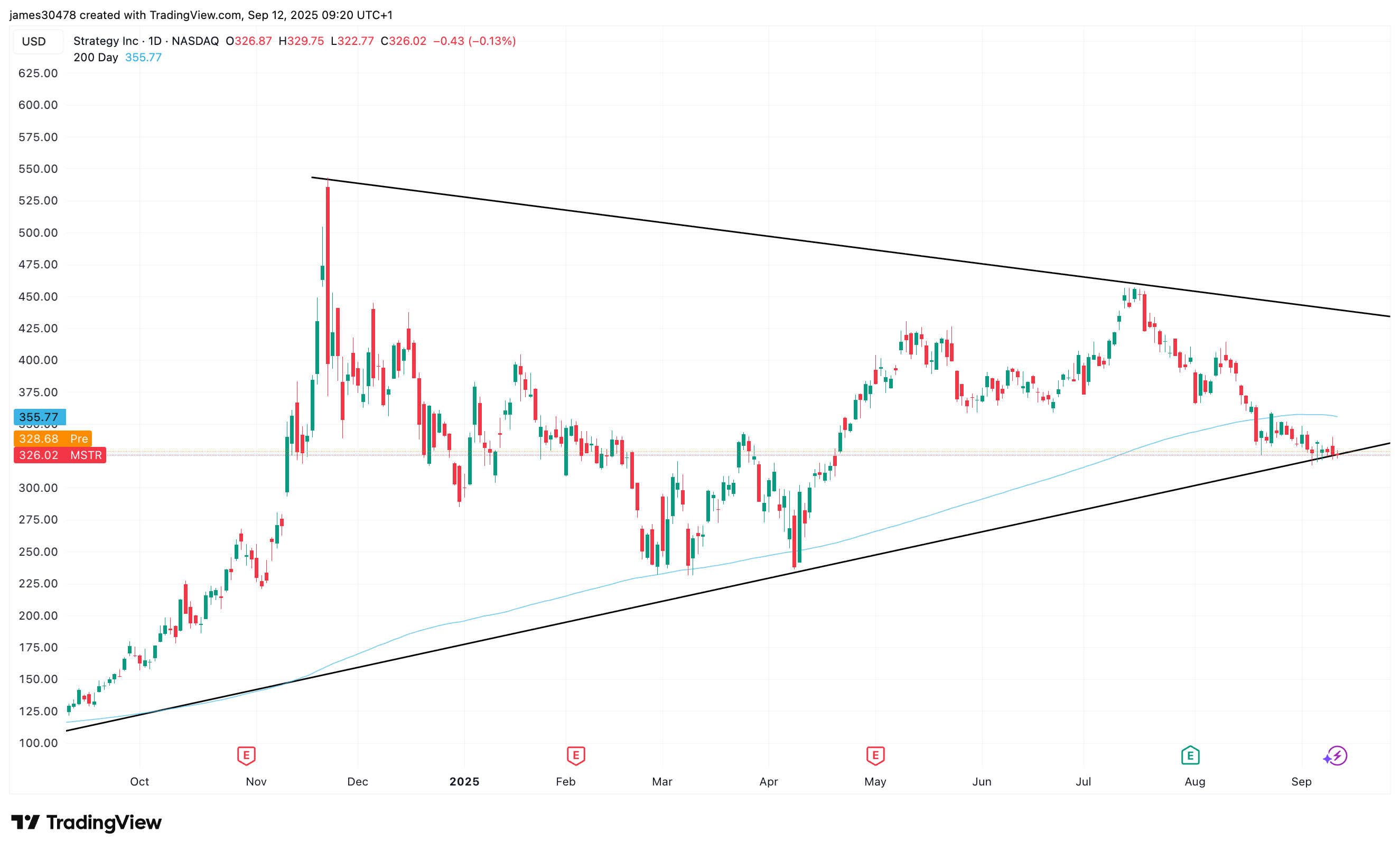
Preferred stock issuance remains muted, with only $17 million tapped across STRK and STRF this week, meaning that the bulk of at-the-money issuance is still flowing through common shares. According to the company, options are now listed and trading for all four perpetual preferred stocks, a development that could provide additional yield on the dividend.
Bullish catalysts for crypto stocks?
The CME’s FedWatch tool shows traders expect a 25 basis-point U.S. interest-rate cut in September and have priced in a total of three rate cuts by year-end.
That’s a sign risk sentiment could tilt back toward growth and crypto-linked equities, underlined by the 10-year U.S. Treasury briefly breaking below 4% this week.
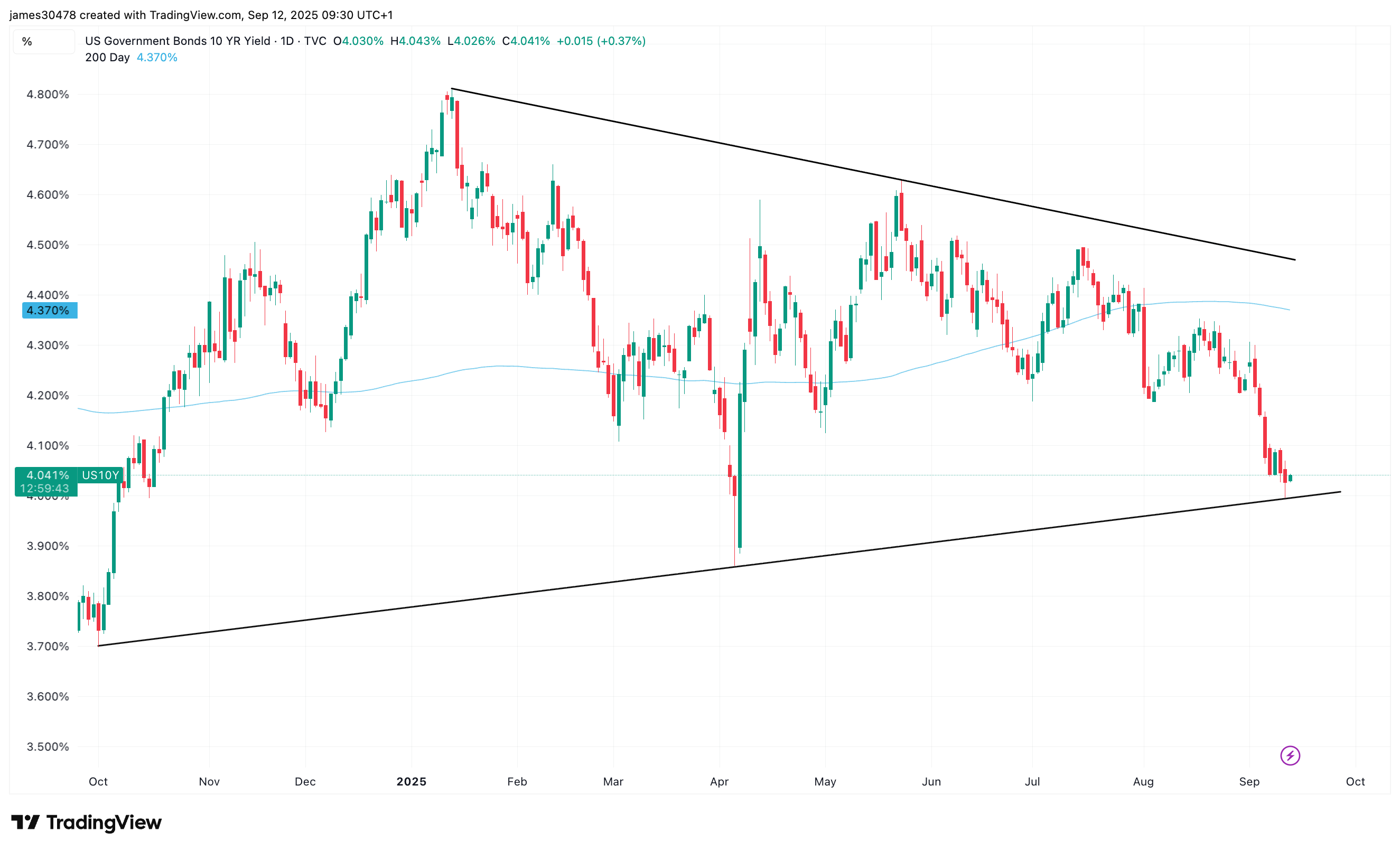
Still, the dollar index (DXY) continues to hold multiyear support, a potential inflection point worth watching.
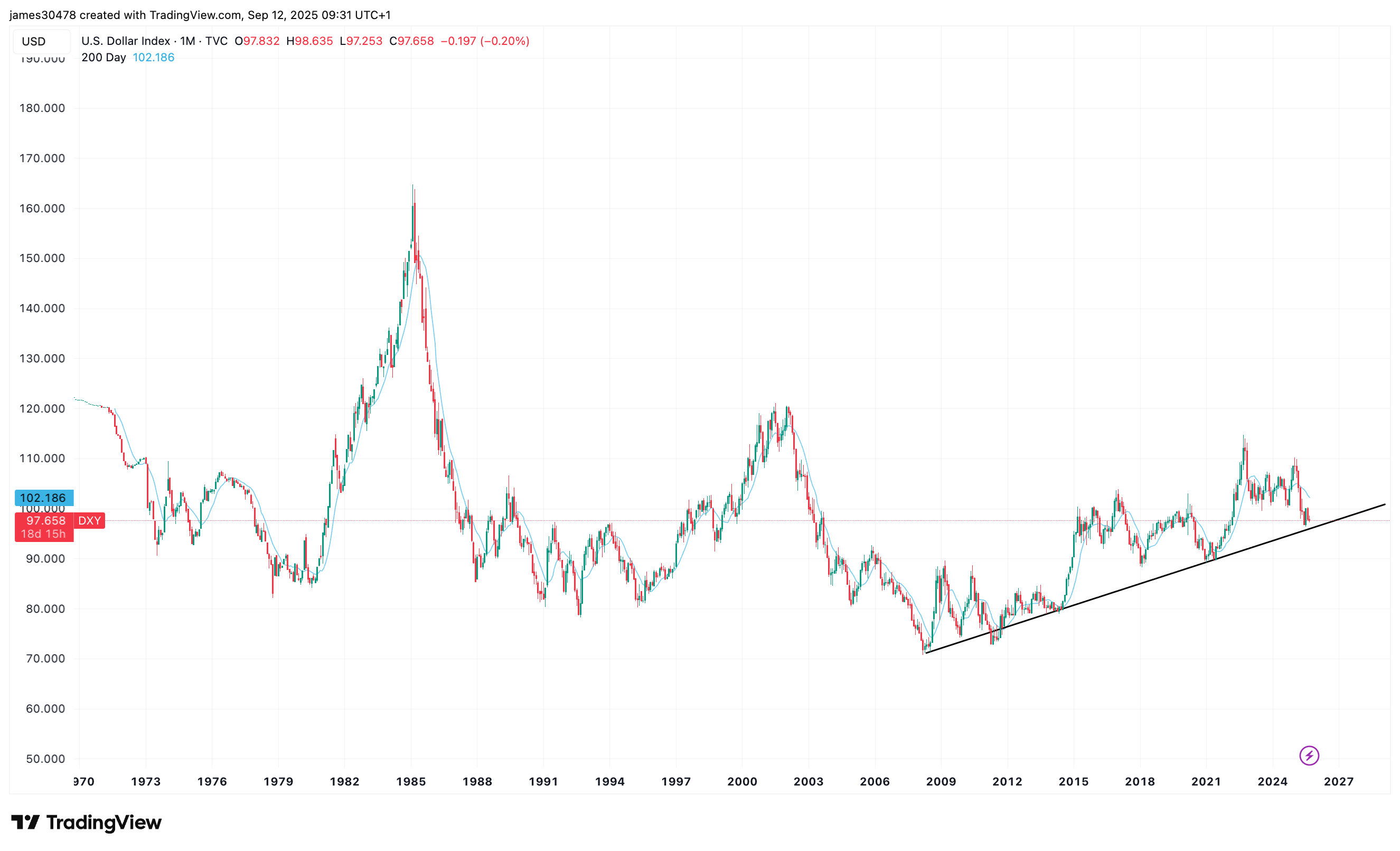
Uncategorized
Fed’s Sept. 17 Rate Cut Could Spark Short-Term Jitters but Supercharge Bitcoin, Gold and Stocks Long Term

Investors are counting down to the Federal Reserve’s Sept. 17 meeting, where markets expect a quarter-point rate cut that could trigger short-term volatility but potentially fuel longer-term gains across risk assets.
The economic backdrop highlights the Fed’s delicate balancing act.
According to the latest CPI report released by the U.S. Bureau of Labor Statistics on Thursday, consumer prices rose 0.4% in August, lifting the annual CPI rate to 2.9% from 2.7% in July, as shelter, food, and gasoline pushed costs higher. Core CPI also climbed 0.3%, extending its steady pace of recent months.
Producer prices told a similar story: per the latest PPI report released on Wednesday, the headline PPI index slipped 0.1% in August but remained 2.6% higher than a year earlier, while core PPI advanced 2.8%, the largest yearly increase since March. Together, the reports underscore stubborn inflationary pressure even as growth slows.
The labor market has softened further.
Nonfarm payrolls increased by just 22,000 in August, with federal government and energy sector job losses offsetting modest gains in health care. Unemployment held at 4.3%, while labor force participation remained stuck at 62.3%.
Revisions showed June and July job growth was weaker than initially reported, reinforcing signs of cooling momentum. Average hourly earnings still rose 3.7% year over year, keeping wage pressures alive.
Bond markets have adjusted accordingly. The 2-year Treasury yield sits at 3.56%, while the 10-year is at 4.07%, leaving the curve modestly inverted. Futures traders see a 93% chance of a 25 basis point cut, according to CME FedWatch.
If the Fed limits its move to just 25 bps, investors may react with a “buy the rumor, sell the news” response, since markets have already priced in relief.
Equities are testing record levels.
Equities are testing record levels. The S&P 500 closed Friday at 6,584 after rising 1.6% for the week, its best since early August. The index’s one-month chart shows a strong rebound from its late-August pullback, underscoring bullish sentiment heading into Fed week.
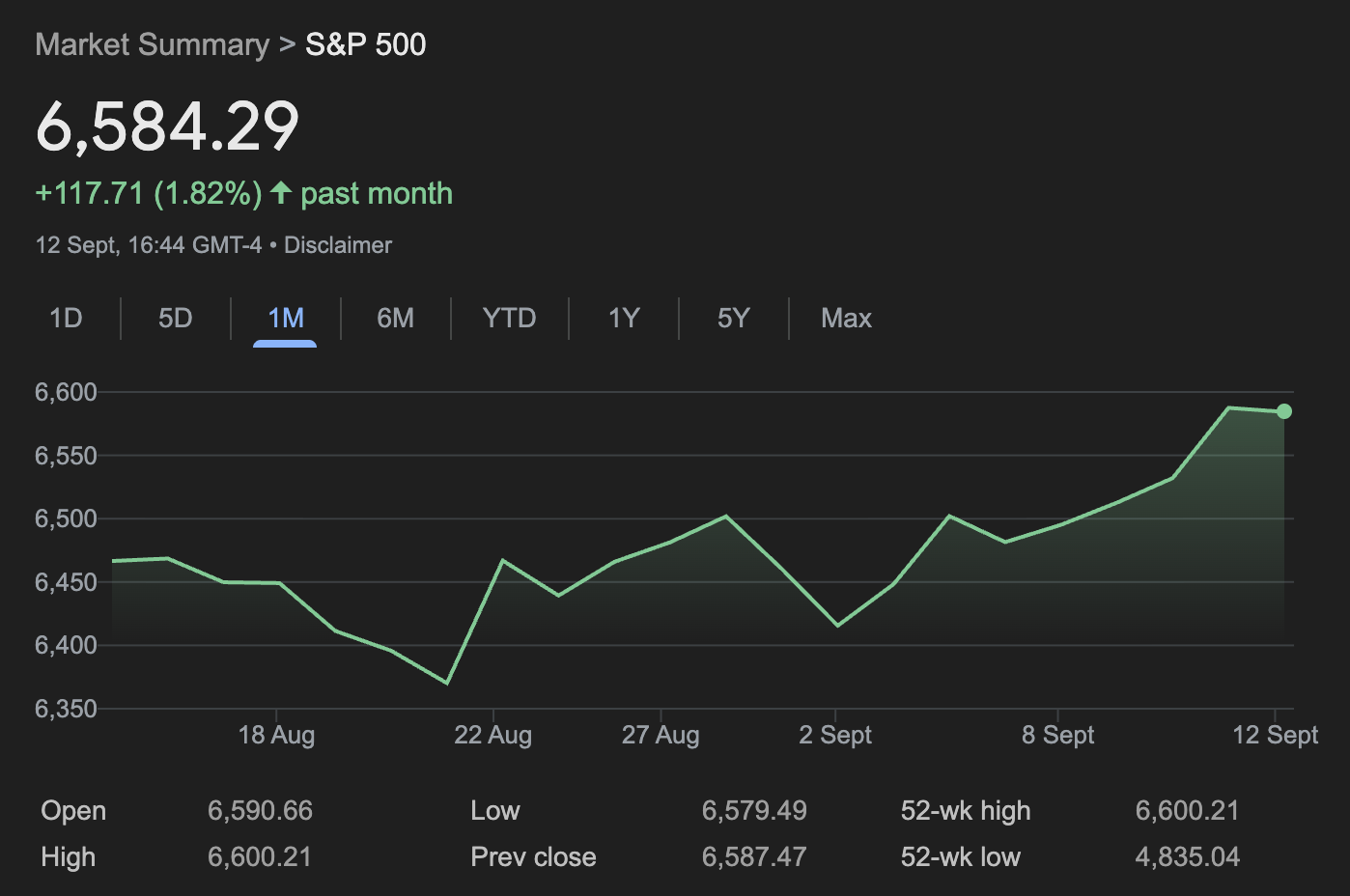
The Nasdaq Composite also notched five straight record highs, ending at 22,141, powered by gains in megacap tech stocks, while the Dow slipped below 46,000 but still booked a weekly advance.
Crypto and commodities have rallied alongside.
Bitcoin is trading at $115,234, below its Aug. 14 all-time high near $124,000 but still firmly higher in 2025, with the global crypto market cap now $4.14 trillion.
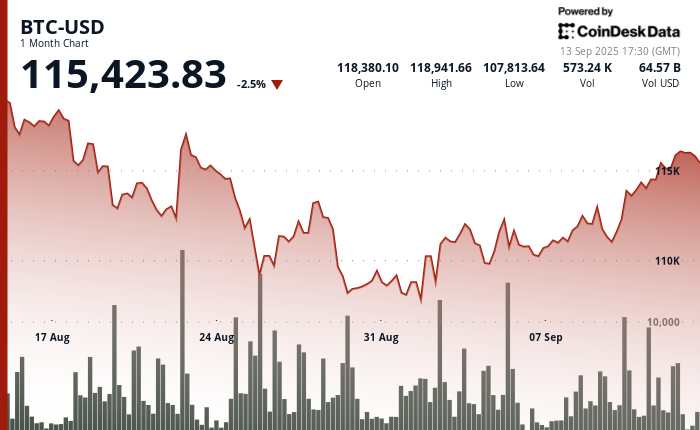
Gold has surged to $3,643 per ounce, near record highs, with its one-month chart showing a steady upward trajectory as investors price in lower real yields and seek inflation hedges.
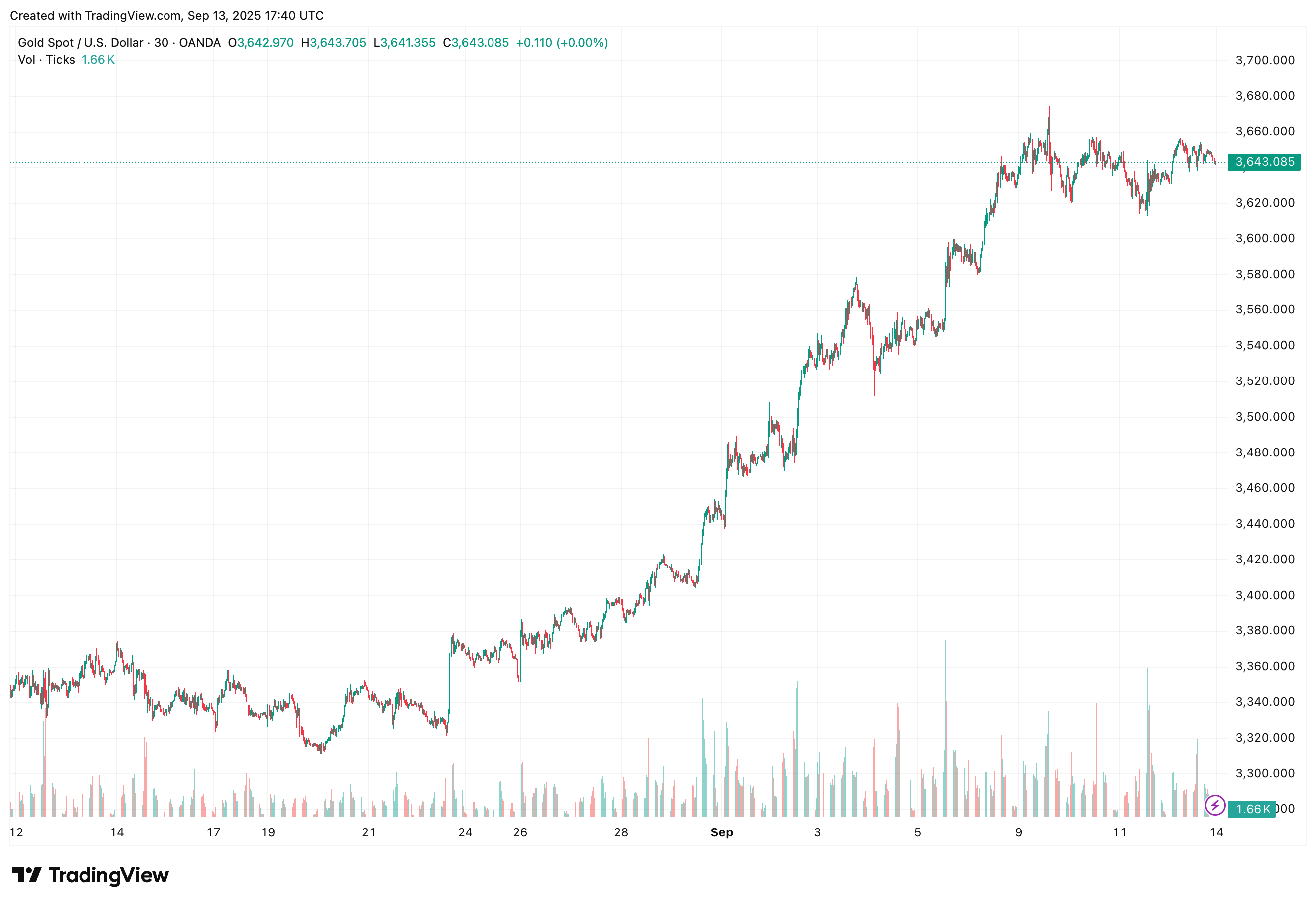
Gold has climbed steadily toward record highs, while bitcoin has consolidated below its August peak, reflecting ongoing demand for alternative stores of value.
Historical precedent supports the cautious optimism.
Analysis from the Kobeissi Letter — reported in an X thread posted Saturday — citing Carson Research, shows that in 20 of 20 prior cases since 1980 where the Fed cut rates within 2% of S&P 500 all-time highs, the index was higher one year later, averaging gains of nearly 14%.
The shorter term is less predictable: in 11 of those 22 instances, stocks fell in the month following the cut. Kobeissi argues this time could follow a similar pattern — initial turbulence followed by longer-term gains as rate relief amplifies the momentum behind assets like equities, bitcoin, and gold.
The broader setup explains why traders are watching the Sept. 17 announcement closely.
Cutting rates while inflation edges higher and stocks hover at records risks denting credibility, yet staying on hold could spook markets that have already priced in easing. Either way, the Fed’s message on growth, inflation, and its policy outlook will likely shape the trajectory of markets for months to come.
-

 Business11 месяцев ago
Business11 месяцев ago3 Ways to make your business presentation more relatable
-

 Fashion11 месяцев ago
Fashion11 месяцев agoAccording to Dior Couture, this taboo fashion accessory is back
-

 Entertainment11 месяцев ago
Entertainment11 месяцев ago10 Artists who retired from music and made a comeback
-

 Entertainment11 месяцев ago
Entertainment11 месяцев ago\’Better Call Saul\’ has been renewed for a fourth season
-

 Entertainment11 месяцев ago
Entertainment11 месяцев agoNew Season 8 Walking Dead trailer flashes forward in time
-

 Business11 месяцев ago
Business11 месяцев ago15 Habits that could be hurting your business relationships
-

 Entertainment11 месяцев ago
Entertainment11 месяцев agoMeet Superman\’s grandfather in new trailer for Krypton
-

 Entertainment11 месяцев ago
Entertainment11 месяцев agoDisney\’s live-action Aladdin finally finds its stars





